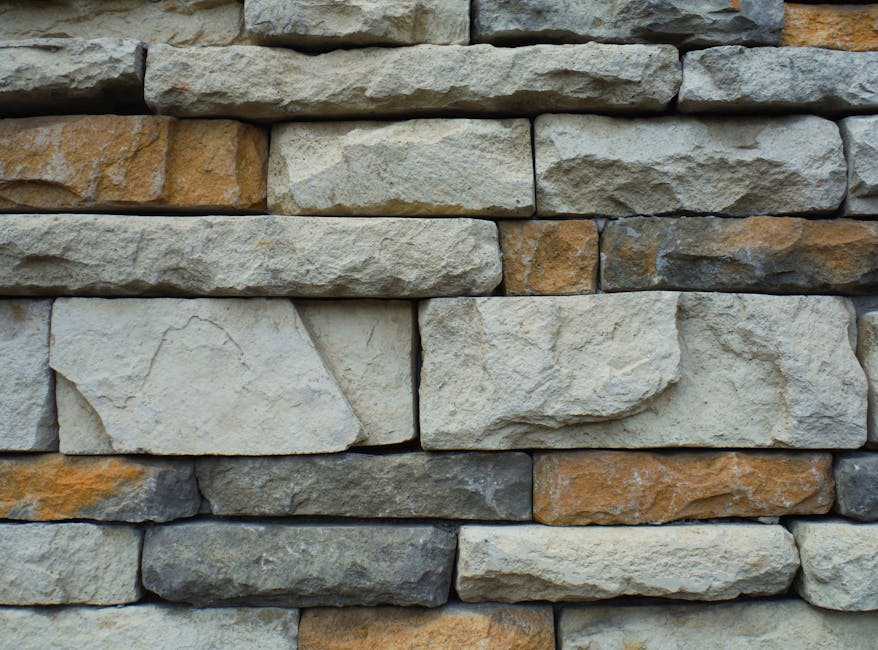Table of Contents
- Exploring the Evolution of Modern Art Statues
- Material Matters: The Impact of Medium on Artistic Expression
- Iconic Modern Art Statues You Should Know About
- Setting the Scene: Integrating Statues into Contemporary Spaces
- Caring for Your Art: Maintenance Tips for Modern Statues
- Q&A
- Final Thoughts


Exploring the Evolution of Modern Art Statues
Modern art statues have undergone a significant transformation over the years, transitioning from traditional forms to innovative and abstract representations. Artists have pushed the boundaries, incorporating various materials and techniques that challenge the viewer’s perception and evoke emotional responses. The exploration of new insights into the human experience has prominently featured in these sculptures, making them reflections of contemporary society’s complexities.
The evolution of modern art statues can be analyzed through several key trends:
- Material Experimentation: Artists are now using materials such as recycled metal, glass, and even digital elements to create dynamic and engaging sculptures.
- Interaction and Engagement: Many modern pieces invite viewers to become part of the artwork, blurring the lines between observer and participant.
- Environmental Influence: Statues increasingly reflect themes related to nature and sustainability, often suggesting a dialogue about our ecological footprint.
As modern art continues to evolve, it remains essential to consider the historical context alongside contemporary influences. The following table showcases a brief comparison of notable modern art statues and their defining characteristics:
| Artist | Title | Material | Year |
|---|---|---|---|
| Alberto Giacometti | The Walking Man | Bronze | 1960 |
| Henry Moore | Reclining Figure | Marble | 1936 |
| Anish Kapoor | The Orbit | Stainless Steel | 2012 |
These examples encapsulate the spirit of modern artistic expression, highlighting not only the techniques but also the diverse messages conveyed through the medium of sculpture. The interplay between physical form and conceptual depth continues to stimulate dialogue within the art community and beyond, ensuring that modern art statues remain an enduring element of cultural discourse.


Material Matters: The Impact of Medium on Artistic Expression
Artistic expression has long been shaped by the materials artists choose for their creations. In the realm of modern art sculptures, the medium often dictates not just the aesthetics, but also the conceptual underpinnings of the work. From bold installations to delicate forms, the choice of materials can evoke emotions, provoke thoughts, and challenge perceptions, ultimately transforming a simple sculpture into a powerful statement.
Consider the following materials that are frequently employed in contemporary sculpture:
- Metal: Known for its durability and versatility, metal can be manipulated into intricate designs, presenting an industrial aesthetic that often symbolizes modernity.
- Wood: This organic medium connects viewers to nature, allowing for a warmth and texture that can evoke nostalgia or a sense of simplicity and purity.
- Glass: With its capacity to capture and refract light, glass sculptures can convey fragility and transparency, challenging the customary sturdiness of sculpture.
- Recycled materials: Utilizing everyday items not only promotes sustainability but also reflects a shift towards social commentary on consumerism.
These choices lead to diverse interpretations and emotional responses among viewers. For example, a large, metallic installation may instill feelings of awe and admiration through its sheer scale and reflective surfaces. In contrast, a sculpture crafted from fragmented glass may elicit feelings of vulnerability and complexity, mirroring the chaos of modern life. Ultimately, the medium is not merely a vessel for artistic vision; it profoundly influences the narrative and emotional resonance of the artwork, enriching the viewer’s experience and understanding.


Iconic Modern Art Statues You Should Know About
Modern art statues encapsulate the innovative spirit and transformation of artistic expression over the years. One striking example is “The Thinker” by Auguste Rodin, which symbolizes deep contemplation and intellectual struggle. Its profound depiction of thought has resonated with viewers since its unveiling in 1902, making it a staple in discussions about modern sculpture. Another significant piece is “Bird in Space” by Constantin Brâncuși, which pioneers abstraction in sculpture. The smooth lines and minimalist form transcend literal interpretation, inviting observers to engage with the essence of flight rather than a specific bird.
Equally noteworthy is “The Large Torso: Study for a Dying Slave” by Alberto Giacometti, which showcases the existential themes prevalent in mid-20th century art. Giacometti’s elongated figures often embody a sense of alienation, and this piece draws viewers into the depths of human condition and vulnerability. Moreover, “Cloud Gate” by Anish Kapoor, affectionately known as “The Bean,” captivates onlookers with its reflective surface that distorts and plays with the urban landscape of Chicago. This interactive quality encourages visitors to engage with the sculpture and their surroundings, blending the boundaries between art and environment.
In the realm of contemporary pieces, “Maman” by Louise Bourgeois stands out as a powerful representation of motherhood and female strength. The towering spider structure, complete with an egg sac, ignites discussions around maternal instincts and protection. Additionally, “The Kiss” by Gustav Klimt, though primarily known as a painting, has inspired a stunning bronze adaptation by different artists. This piece captures the intimacy of love and connection, reminding us of the emotional depths conveyed through sculpture. Each of these works offers a glimpse into the evolving narrative of modern art and its ability to provoke thought and emotion within the viewer.
Setting the Scene: Integrating Statues into Contemporary Spaces
As urban landscapes evolve, the incorporation of modern art statues offers a refreshing contrast to the hard lines of contemporary architecture. Far more than mere decorative elements, these sculptures breathe life into public and private spaces, inviting interaction and contemplation. Their diverse forms can provoke thought, inspire creativity, and even regenerate community engagement. By carefully selecting placements, designers can transform plain areas into dynamic environments that resonate with both art enthusiasts and casual passersby.
When integrating statues into contemporary spaces, consider various factors that enhance their impact:
- Scale and Proportion: Statues should complement the surrounding architecture. Large pieces can dominate vast plazas, while smaller ones might be perfect for intimate corners.
- Materials: The choice of materials, like metal, stone, or resin, can influence the tone of the space. Sleek metals may convey a modernist vibe, whereas textured stones can evoke organic warmth.
- Contextual Relevance: Artworks that reflect local culture or history can foster a deeper connection with the audience, making the spaces feel more personalized and reflective of their environment.
Furthermore, the interaction of light and shadow plays a crucial role in how sculptures are perceived throughout the day. Statues can serve as focal points at different times, whether illuminated by the golden hues of sunrise or dramatically highlighted by artificial lighting at night. Here’s a simple table showcasing how various settings affect the perception of modern art:
| Setting | Lighting | Impact |
|---|---|---|
| Urban Plaza | Natural daylight | Inviting and vibrant |
| Park | Soft evening light | Serene and contemplative |
| Art Gallery | Spotlit | Intimate and focused |
These elements all contribute to how modern art statues enhance their surroundings, allowing for a creative dialogue between the art and its environment. By thoughtfully integrating these sculptures into design, spaces can evolve from mere functional areas into cultural landmarks, each telling a story and enriching the urban narrative.


Caring for Your Art: Maintenance Tips for Modern Statues
To preserve the beauty and integrity of modern statues, regular maintenance is essential. Start by dusting your statue with a soft, dry cloth or a feather duster to remove loose dirt and debris. Avoid abrasive materials that could scratch the surface. For more stubborn grime, you can use a damp cloth with mild, non-abrasive soap. Gently wipe down the statue, ensuring you don’t saturate any joints or openings, which could lead to damage over time.
Temperature and humidity play a critical role in maintaining the condition of your artwork. If your statue is displayed outdoors, ensure it is made from weather-resistant materials. For those situated indoors, keep the room at a stable temperature and humidity level, ideally around 20°C (68°F) and 40-60% humidity. Avoid placing your statue near direct sunlight, heating vents, or areas with extreme temperature fluctuations. To facilitate good care, maintain a checklist to monitor the environment around your art piece:
| Environment Factor | Ideal Condition | Impact if Unmonitored |
|---|---|---|
| Temperature | 20°C (68°F) | Expansion or contraction of materials |
| Humidity | 40-60% | Mold growth or cracking |
| Light Exposure | Indirect sunlight | Fading colors and surface deterioration |
Lastly, consider the use of protective coatings designed for your statue’s material. Products like wax or sealants can enhance the finish and add a layer of protection against the elements, while also helping to repel dust and moisture. Make sure to follow the manufacturer’s instructions for application and frequency. Regular evaluations of your statue for cracks, fading, or signs of wear can help identify when maintenance is required. Proper care ensures your modern artwork not only retains its aesthetic appeal but also stands the test of time.
